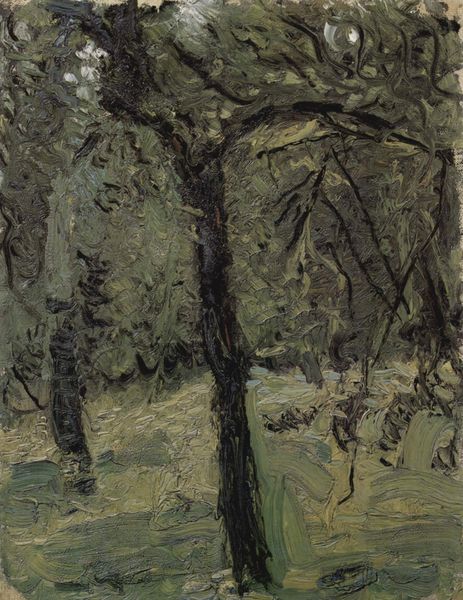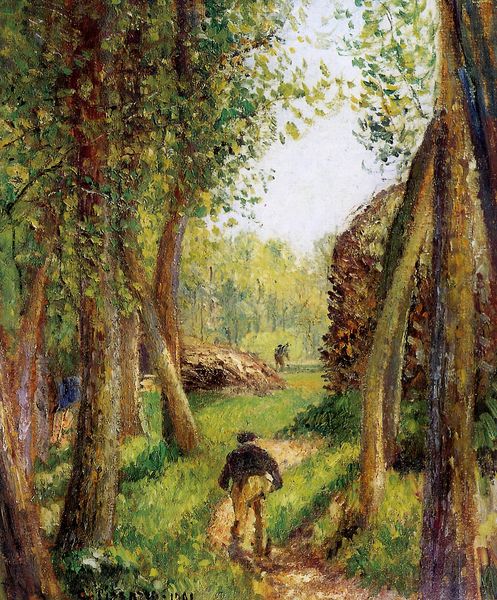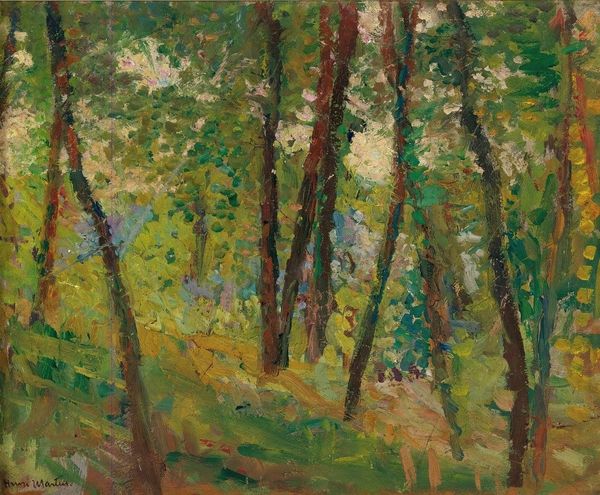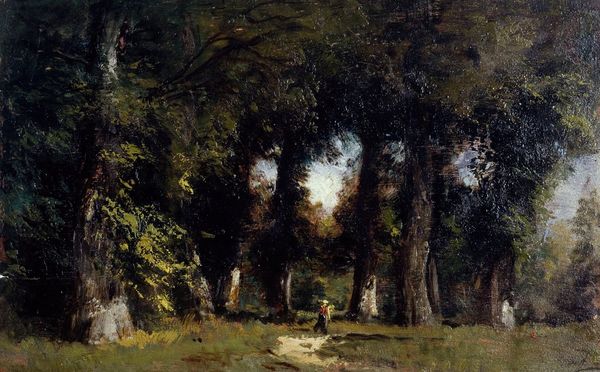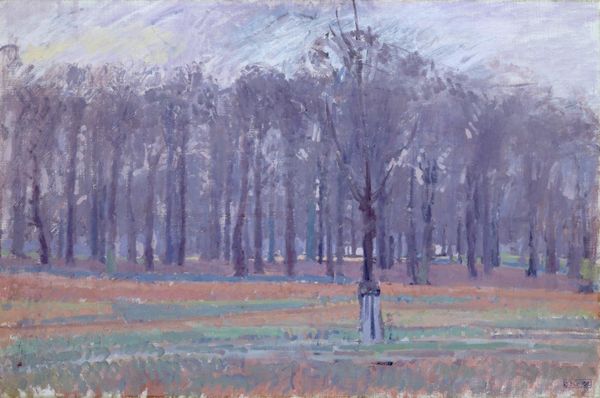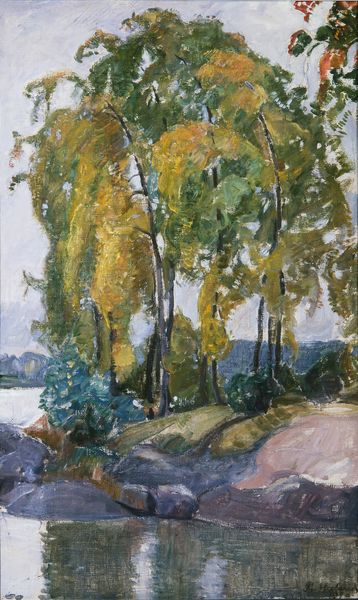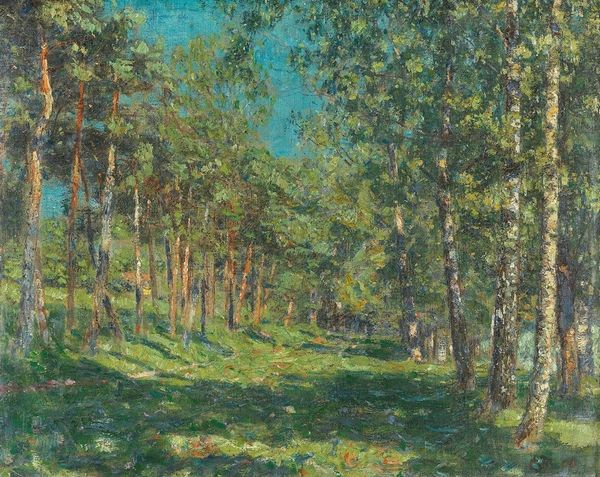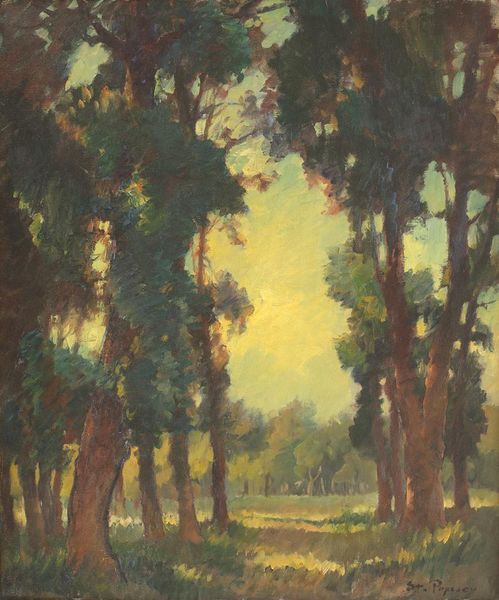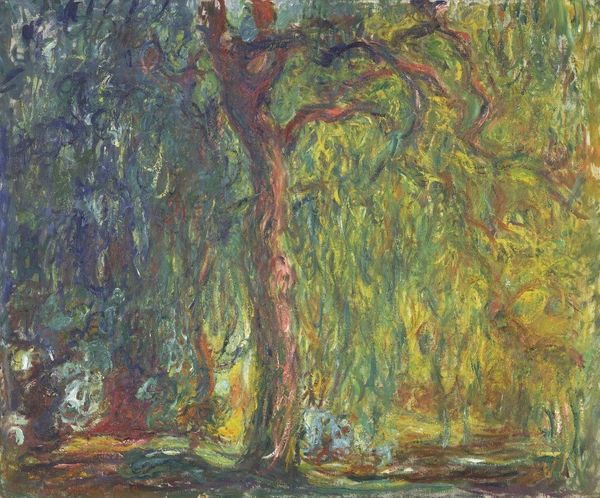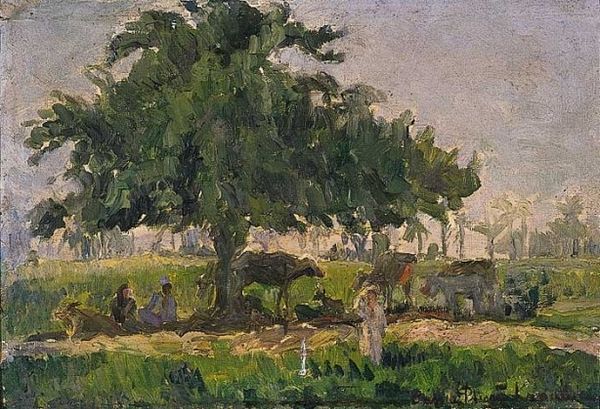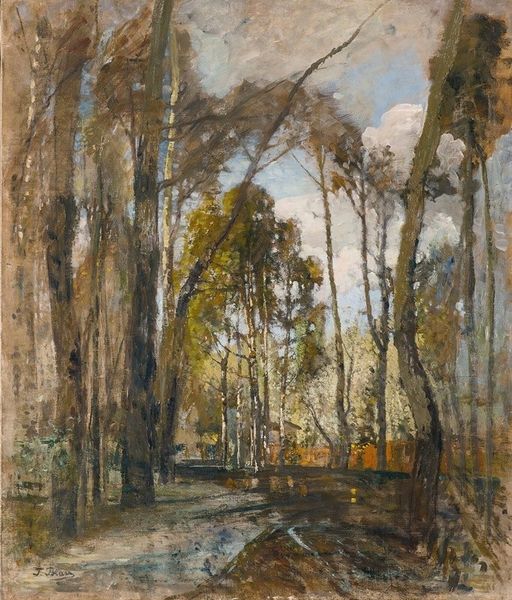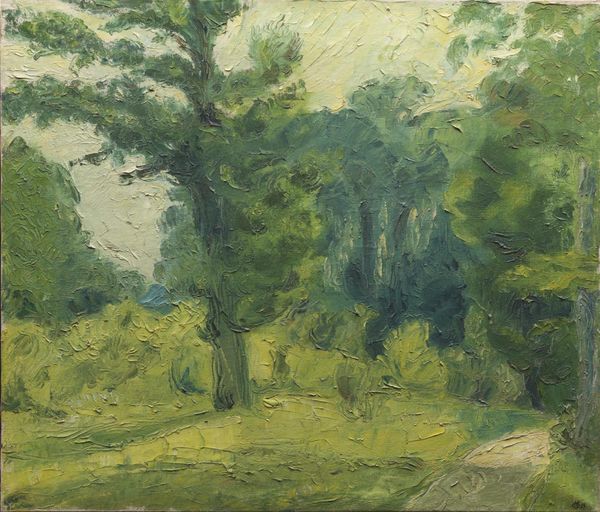
Copyright: Public domain
Curator: Looking at Henri Martin’s "Garden of Luxembourg" from 1931, rendered in oil on canvas, one is struck by the enduring appeal of a classic landscape, especially when depicted in an impressionistic style like this. Editor: It feels surprisingly somber for a garden scene, almost like looking through a veil. There's this tension between the bright background and the darker foreground elements that’s really compelling. Curator: Absolutely, that interplay is vital. Trees have always signified strength, endurance, but also cyclical life and death. Their skeletal presence here suggests a meditation on time. Do you see how the bare branches reach up like supplicating arms? It evokes feelings of mortality. Editor: Yes, I see that now, it also speaks to this larger narrative about public space and privilege during this era in Paris. Access to these manicured spaces was often mediated by class. Is Martin critiquing that divide by creating such a melancholy atmosphere within what should be an idyllic place? Curator: That is an interesting lens. The way the figures in the background are blurred could indicate they represent anonymity. There is a dream-like quality, a sense that the garden and those who use it belong to the same narrative cycle as the natural forms, forever intertwined yet separate. Editor: It makes me think about the role of art as a mirror reflecting societal conditions. Even within something seemingly apolitical like a landscape painting, we find echoes of socio-economic realities. Maybe the artist intended to capture that inherent inequality and how it is perpetuated through visual representations. Curator: That adds a profound layer to it. And, I think that Martin intended to invoke deeper concepts surrounding civilization. By utilizing light to contrast nature’s symbols with humanity’s creation, the viewer gains a subtle sense of what Martin considers to be valuable. Editor: Thank you, examining its layers has been incredibly thought-provoking. I see Martin's piece as a poignant commentary about class, labor and access, issues we are still actively trying to resolve in the twenty-first century. Curator: Indeed, and the image’s ability to evoke reflections on death, time, and social hierarchies makes it eternally relevant.
Comments
No comments
Be the first to comment and join the conversation on the ultimate creative platform.
